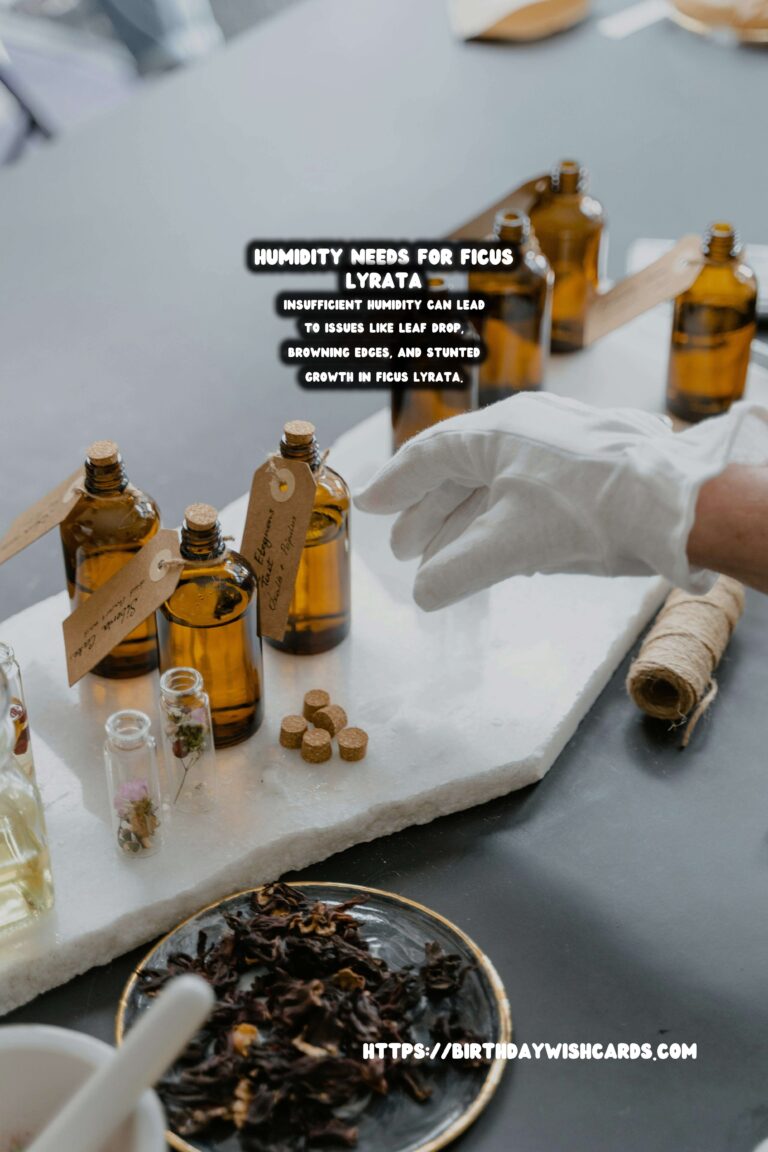
The Ficus Lyrata, commonly known as the fiddle leaf fig, is a popular houseplant renowned for its large, glossy leaves and striking appearance. However, to keep this plant thriving, understanding and meeting its humidity needs is crucial. Providing the right environment not only ensures the health of the plant but also enhances its aesthetic appeal in your living space.
The Importance of Humidity for Ficus Lyrata
Humidity plays a significant role in the health of the Ficus Lyrata. Being native to the tropical rainforests of West Africa, this plant is accustomed to high humidity levels. In its natural habitat, the humidity is often above 60%, which is essential for maintaining the moisture content in the leaves.
When grown indoors, especially in climates with low humidity, the Ficus Lyrata can struggle. Insufficient humidity can lead to several issues, including leaf drop, browning edges, and stunted growth. Therefore, replicating a humid environment is key to ensuring your fiddle leaf fig remains vibrant and healthy.
Signs of Low Humidity
Identifying the signs of low humidity is the first step in addressing the needs of your Ficus Lyrata. Some common symptoms include:
- Leaf Browning: The edges of the leaves may turn brown and crispy as a result of dry air.
- Leaf Drop: A sudden drop in leaves can indicate that the plant is stressed due to lack of moisture.
- Slow Growth: Without adequate humidity, the plant may not grow as quickly or as robustly as it should.
Creating the Ideal Humidity Environment
There are several ways to increase the humidity around your Ficus Lyrata:
Using a Humidifier
One of the most effective ways to maintain high humidity levels is by using a humidifier. Placing a humidifier near your Ficus Lyrata can help mimic its natural environment, especially during the winter months when indoor air is typically drier.
Misting the Leaves
Misting the leaves of your fiddle leaf fig can provide a temporary boost in humidity. However, it is important to mist in moderation to prevent water from sitting on the leaves for too long, which can lead to fungal issues.
Grouping Plants Together
Placing several plants close together can create a microclimate that increases humidity. As plants transpire, they release moisture into the air, benefiting each other.
Using a Pebble Tray
A pebble tray is another simple method to increase humidity. Place a layer of pebbles in a shallow tray, add water below the top of the pebbles, and set your plant on top. As the water evaporates, it will raise the humidity around the plant.
Maintaining Optimal Humidity Levels
To ensure your Ficus Lyrata continues to thrive, regularly monitor the humidity levels. A hygrometer can be a useful tool to measure the humidity in your home. Aim to keep the humidity between 40% and 60% for optimal growth.
In addition to monitoring humidity, ensure your plant is placed in an area with bright, indirect light, and water it appropriately. Overwatering can lead to root rot, so it is important to let the soil dry out slightly between waterings.
Conclusion
Caring for a Ficus Lyrata involves more than just watering and sunlight. Understanding and maintaining the right humidity levels is essential for the health and beauty of this striking plant. By implementing these strategies, you can create an environment that supports robust growth and prevents common humidity-related problems.
The Ficus Lyrata, or fiddle leaf fig, thrives in environments with high humidity levels. Insufficient humidity can lead to issues like leaf drop, browning edges, and stunted growth in Ficus Lyrata. Using a humidifier, misting the leaves, grouping plants together, and using a pebble tray are effective ways to increase humidity. Aim to keep the humidity between 40% and 60% for optimal growth of your Ficus Lyrata. Understanding and maintaining the right humidity levels is essential for the health and beauty of the Ficus Lyrata. 









#FicusLyrata #Houseplants #PlantCare #Humidity #IndoorGardening




